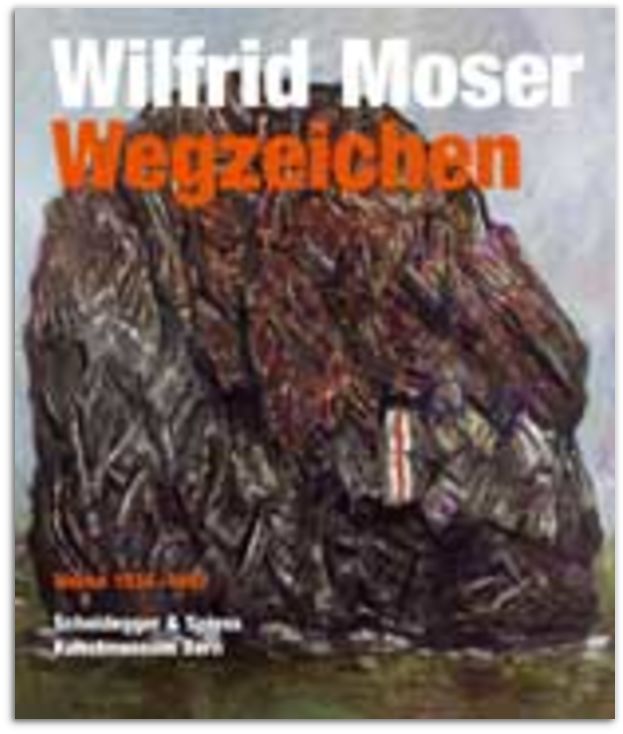Wilfrid Moser. Wegzeichen
Malerei 1934–1997
GVA Gemeinsame Verlagsauslieferung Göttingen
GmbH & Co. KG
P.O. Box 2021
37010 Göttingen
Germany
+49 551 384 200 0
info@gva-verlage.de
A leading Swiss painter and sculptor of abstract-figurative expressionism and an important representative of Tachisme, or lyrical abstraction, in the 1940s and ’50s, Wilfrid Moser (1914–97) has gained international recognition for his vast oeuvre of paintings, wood reliefs, and sculptures. Wilfrid Moser. Milestones is the first comprehensive monograph of the life and work of this important figure of twentieth-century Swiss art.
Published to accompany a 2009 exhibition at the Museum of Fine Arts Bern, Wilfrid Moser. Wegzeichen includes essays by leading art historians and curators Matthias Frehner and Tina Grütter that focus on Moser’s biography, his travels through Europe and Morocco, and the stages of his work. An additional essay by Gabriel Moser investigates the artist’s interest in space and the city as subjects of his work: while living in Paris in the latter half of his life, Moser became fascinated by the Métro, viewing it as a connection between hectic urban life and the classical myths of the underworld.
The German language book on a significant Swiss artist is an essential volume for art scholars and historians.
«Der Katalog, eine eigentliche Monografie, verdient besondere Erwähnung. Mit-Kurator Matthias Frehner hat die Haupttexte verfasst – mit der Liebe und Leidenschaft des langjährigen Kenners und Freundes. Da finden sich lauter zugreifende Sätze und packende Aussagen: Auch der Laie kann sich nichts Besseres wünschen zur vertieften Auseinandersetzung mit diesem bewegenden Werk.» Angelika Maass, Der Landbote
«Das Kuratorenteam der Berner Ausstellung, Direktor Matthias Frehner und Tina Grütter, die ehemalige Leiterin des Museums zu Allerheiligen in Schaffhausen, hat Mosers Werk im gewichtigen Katalog einer ebenso kritischen wie empfindsamen Analyse unterzogen. Die Entwicklung seiner Formensprache und die existenzielle Grundmotive seines Schaffens werden erstmals in aller Deutlichkeit sichtbar.» Maria Becker, Neue Zürcher Zeitung

